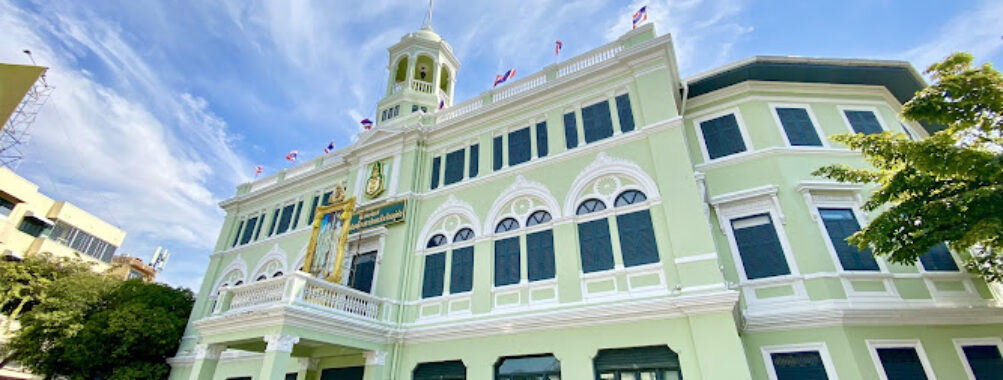
King Prajadhipok Museum
Table of Contents
Description
The King Prajadhipok Museum is a focused, quietly powerful stop for anyone interested in the twists and turns of modern Thai history. Dedicated to King Prajadhipok, also known as King Rama VII, the museum traces both the personal life of a monarch and the political upheavals that marked his reign — including the momentous shift toward constitutional government. Located in the Pom Prap Sattru Phai district of Bangkok, this history museum offers a compact, thoughtfully curated experience that rewards curiosity more than casual browsing.
Visitors will notice immediately that this is not a palace-turned-theme-park. The exhibits are restrained, often intimate: photographs, personal letters, uniforms, mint-condition documents, and household items that belonged to King Rama VII. Those small objects do heavy lifting here. A simple teacup or an official seal can provoke real reflection about leadership, responsibility, and change. The museum does a good job of balancing respect for a monarch with an honest presentation of the political currents that defined his era — especially the 1932 revolution and the complex transition to constitutional democracy.
Exhibition design favors clarity over glitz. Text panels are concise, timelines are easy to follow, and original artifacts are displayed with contextual explanations that make sense even to those who didn’t study Southeast Asian history in school. Audio guides and occasional multi-media displays are used sparingly, which is refreshing. Sometimes silence is the best way to let history speak. That said, the museum also provides enough background to help non-experts understand why King Prajadhipok matters to modern Thai identity and political thought.
Accessibility is noticeably better here than at many small museums in Bangkok. There is a wheelchair-accessible entrance and restroom, which means older travelers and families with strollers can move through most areas without awkward detours. Practical amenities are minimal — there is no on-site restaurant, so planning ahead for snacks is wise. Restrooms are available, clean enough, and functional. Families with children will find the museum approachable; displays are clear and there are kid-friendly touchpoints if a parent is willing to explain the stories behind artifacts. It’s a place where curious children can be nudged into asking unexpectedly insightful questions.
One of the most compelling aspects is how the museum frames King Prajadhipok’s personality. Rather than presenting a one-dimensional royal image, curators show a man who was contemplative, sometimes indecisive, often progressive in private thought but constrained by public duty and political realities. Photographs capture him reading, writing, conversing with ministers; personal correspondence reveals wit, weariness, and occasional regret. It makes the historical narrative feel human, and for travelers used to sweeping palace tours, this quieter, more nuanced portrait stands out.
Another strength is the museum’s treatment of democracy and constitutional change. The exhibits don’t aim to preach a political line. Instead, they lay out key documents, eyewitness accounts, and artifacts that allow visitors to trace how ideas about governance, citizenship, and rights evolved during the early 20th century in Thailand. For anyone fascinated by how nations negotiate modernity, the museum provides a clear case study: the interplay of monarchy, military, civil society, and foreign influence that shaped a pivotal era.
What’s less obvious to the casual visitor — and what often becomes a favorite discovery for repeat visitors — is the way the museum situates small details within larger historical forces. The craftsmanship of a military uniform, the wording of a seemingly bureaucratic decree, or the arrangement of period furniture can lead to broader conversations about class, colonial pressure, and national self-conception. These are the kinds of insights that convert a quick stop into a thoughtful hour or two of reflection.
Practical time expectations: most travelers spend between 45 minutes and 90 minutes here, depending on how deeply they read the panels and whether they take an audio guide or join a short guided talk. The museum can be very peaceful on weekday mornings; weekends and public holidays draw local visitors and students, which gives the place an energetic, almost classroom-like atmosphere. That atmosphere is good — it feels like a living conversation rather than a sterile archive.
Photographers will find satisfying details to capture: sepia-toned portraits, handwritten notes under soft lights, ornate insignia, and the quiet architecture of the galleries themselves. That said, flash photography is discouraged and some items are protected behind glass. Visitors who forget to check restrictions can expect gentle, polite reminders from museum staff. Staff are generally helpful and knowledgeable; they’ll often point out lesser-seen items or explain a local historical nuance if asked. A friendly chat with a guide can be the highlight of the visit for many people.
For planners who like to stitch an itinerary together, the museum’s location in Pom Prap Sattru Phai makes it easy to slot into a half-day of exploring Bangkok’s older neighborhoods. It’s near markets and traditional neighborhoods where a traveler can taste street food or browse for antiques after soaking up a dose of history. But remember — the museum itself is low-key. It rewards patience and a taste for detail rather than a need for nonstop spectacle.
In short, the King Prajadhipok Museum appeals most to those who want to understand Thailand’s 20th-century political evolution through the life of one monarch. It’s a small museum with a focused mission: to illuminate the links between personality, power, and change. And while it may not have the blockbuster scale of some tourist attractions, it offers a depth of insight that lingers. Visitors who take time to read, reflect, and maybe even argue quietly with the exhibits will walk away with a clearer sense of how a nation negotiated the modern world — and how individual choices and structural forces dance together in the making of history.
Location
Places to Stay Near King Prajadhipok Museum
Find and Book a Tour
Explore More Travel Guides
No reviews found! Be the first to review!